Science of composting in simple terms – Compostul pe înțelesul tuturor
Composting
Have you ever heard about composting? No… well let me tell you what it is.
In the simplest terms it’s a cycle of life. Organic matters are naturally decomposed in a process called composting. This process recycles various organic materials or waste products and produces a soil conditioner (the compost).
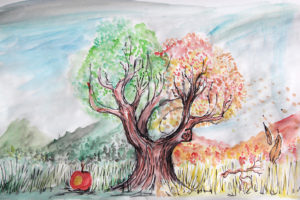
Simpler? A tree or a vegetable, maybe a fruit will grow, fall on the ground and most likely by next year same time will turn into dirt – and not just simple dirt, it will be highly nutritious dirt, extremely good for plants to grow. So living things (plants and such) are with time becoming hummus (a really good dirt for plants), and if you gather it pile in order to get hummus, you can call it composting.
Now to business. Composting is highly recommended in agriculture. Some say that animals are the best fertiliser producers, but they are wrong: it is indeed good, but it contains a lot of acid so you need wait a few weeks or even months before using it as a compost. And not even mentioning the smell. So, a better, less smelly way to compost is to start a compost pile. It is easy and if done RIGHT it will not smell at all! Also on the benefits side: in some cases it takes only 2 weeks before getting good and usable compost (awesome right?).
What do you need for it?
Not much: you need space (depending how big is the compost pile).
Also you need food leftovers, as these will be the things you want to get rid of and turning it in green stuff, known as a nutrition for compost.
Another thing you need is referred to as brown stuff, that means old wood or paper, leaves that have turned to brown or old grass that is already brown. Brown stuff is a building block for composting.
Lastly it needs some air and water. These are quite important things for compost. Since composting is a chemical reaction between brown and green stuff, if it does not get enough of air it will create a lot of gas (and yes it smells). Also with reaction like this compost piles can become hot and I mean REALLY hot. (Ever heard a compliment “wow you are hotter than a compost pile”? ) There are cases where dry compost piles have thought on fire, since in summer, a good compost pile has steady degrees of 60 C, and if it is not touched in long time it can grow to about 80 degrees C easily.
Not to scare you, but no – the facts are not from some sort of science fiction movie, they are real.
OK, lets start with a compost pile.
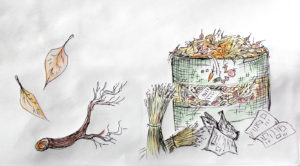 step 1: find a place in the shade on the middle of the day. In my home I have 1m diameter of fence circle, on the shade of a apple tree.
step 1: find a place in the shade on the middle of the day. In my home I have 1m diameter of fence circle, on the shade of a apple tree.
step 2: start a kind of sandwich with brown stuff and green stuff. A compost pile is composed from 80% of brown stuff and 20%green stuff. Just imagine a sandwich from this and try to build one … you but a bit of brown stuff and add 1/4th of green stuff, on top of that again brown stuff, added 1/4 green stuff and so on. Some tips would be also try to always end with brown stuff so it would not attract animals or flies (also it will prevent it from smelling)
Taking care of a compost pile
General rule is – if it smells you messed it up. That means it might not have enough of air, or too much of green stuff, meaning not enough of brown stuff to decompose that smelly green stuff. Maybe your compost pile is black? That means its overheating and you need to stir it. Yes its best to stir your compost pile once a week so it would not over heat and maybe to take that precious nutrition rich dirt that your plants grave for so so so so much.
Urban compost
But wait! What if you live in a city and want to compost at home? There is an soulution. All yo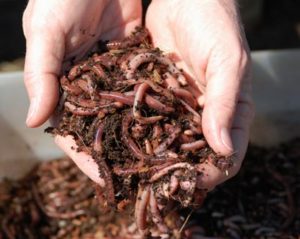 u need is a bucket, green stuff (some food leftovers), a bit of brown stuff (a old news paper will do), some water and some WORMS. But not any worms: you need a handful of worms from special species and you problem is solved (for example red wigglers are most popular). These compost worms are awesome, they speed up composting remarkably and as result you can collect worm juice. All that these guys are doing is eating, reproducing and leaving behind their poo, so juice is actually their pee, one of the most powerful organic fertilisers. You have to mix it with water though, 10:1 for not killing the plant itself, as it it very concentrated.
u need is a bucket, green stuff (some food leftovers), a bit of brown stuff (a old news paper will do), some water and some WORMS. But not any worms: you need a handful of worms from special species and you problem is solved (for example red wigglers are most popular). These compost worms are awesome, they speed up composting remarkably and as result you can collect worm juice. All that these guys are doing is eating, reproducing and leaving behind their poo, so juice is actually their pee, one of the most powerful organic fertilisers. You have to mix it with water though, 10:1 for not killing the plant itself, as it it very concentrated.
So, when composting in the city all you need to do is to water the little guys, feed them every once in a while, have a bit of time to time gather the compost and juice, and ooh – make sure that they will not get direct sunlight as this is what kills them.
Yes and no in a compost pile
YES
- organic materials like leaves, grass, and food scraps (not oily!)
- newspapers (most inks used in newspapers are not toxic)
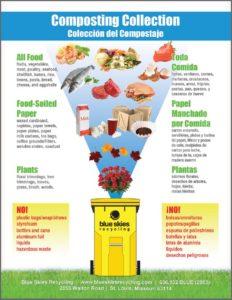
- tree bark
- all fruits and vegetables (including citruses)
- vegetable and fruit peels and ends
- coffee grounds and filters
- tea bags (even those with high tannin levels)
- grains such as bread, cracker and cereal (including moldy and stale)
- eggshells (rinsed)
- leaves and grass clippings (not sprayed with pesticides)
- paper towels (which has not been used with cleaners or chemicals)
NO
- meat and bones
- non organic waste as plastic
- oily materials
Compost
Ai auzit de compost? Nu… atunci dă-mi voie să îți spun ce este.
Pe scurt, este ciclul vieții. Materiile organice se descompun natural într-un proces numit compostare. Procesul reciclează variate materii organice sau resturi de produse și face un îngrășământ pentru sol (compost).
Mai simplu? Un copac ori o legumă, ori chiar un fruct va crește, va cădea pe pământ și până la anul va fi transformat în sol – și nu simplu sol, ci un sol cu proprietăți nutritive, extrem de bun pentru creșterea plantelor. Prin urmare ființele vii (plante și altele) se transformă în timp în humus (o materie foarte bună pentru plante), iar când aduni o astfel de grămadă de humus poți să o numești compost.
Compostul este foarte recomandat în agricultură. Unii zic că animalele sunt cei mai buni fertilizatori, dar se înșeală: sunt buni întradevăr, dar conțin mult acid, deci trebuie să aștepți câteva săptămâni sau chiar luni pentru a le folosi resturile ca și compost. Și să nu mai vorbim de miros. Un mod bun, mai puțin mirositor de a face compost este să faci o grămadă de compost. E ușor și dacă e făcut CORECT nu va mirosi deloc! Printre beneficii: în unele cazuri durează doar 2 săptămâni pentru a avea compost bun de folosit (minunat, nu?).
De ce ai nevoie?
Nu foarte multe: spațiu (depinde cât de mare e grămada de compost). Și mai ai nevoie de resturi alimentare, că astea sunt cele de care vrei să scapi, sunt chestiile verzi pe care le transformi în resurse pentru compost. Și mai ai nevoie de chestii maro, lemn vechi sau hârtie, frunze sau iarbă maro deja. Acestea sunt baza compostului.
Și în cele din urmă ai nevoie de aer și apă. Și astea sunt destul de importante pentru compost. Din moment ce compostarea este o reacție chimică între materiile maro și cele verzi. Dacă nu are suficient aer se vor crea gaze (și va mirosi). Totodată în reacțiile dintr-o grămadă de compost poate deveni foarte fierbinte. (Ai auzit vreodată de complimentul “ești mai fierbinte decât o grămadă de compost”?). Au fost cazuri în care grămezi uscate de compost au luat foc, căci pe timp de vară, o grămadă de compost are o temperatură constantă de 60 grade C și dacă nu este atinsă o perioadă poate ajunge la 80, cu ușurință.
Nu intenționez să te sperii, dar astea sunt fapte reale și nu filme science fiction.
OK, să facem o grămadă de compost.
Pasul 1: găsește un loc care e la umbră în miezul zilei. Acasă am un spațiu de 1 metru diametru îngrădit cu un gard, sub un măr.
Pasul 2: fă un sandviș cu materii maro și verzi. O grămadă de compost are 80% materii maro și 20% materii verzi. Imaginează-ți un sandviș din astea și fă unul. Deci materii maro și 1/4 materii verzi și apoi din nou maro și din nou versi. Un sfat, încheie cu materii maro, ca să nu atragi animale sau muște și pentru a nu mirosi.
Îngrijirea unei grămezi de compost
Regulă generală – dacă miroase ceva a mers prost. Adică ori nu a avut suficient aer, ori prea multe materii verzi și prea puține maro în care să se descompună. Poate grămada ta de compost e neagră? Asta înseamnă că s-a supraîncălzit și trebuie să o amesteci. Da, e bine să amesteci grămada de compost o dată pe săptămână, pentru a nu se încăzi prea tare și a distruge elementele nutriționale de care plantele tale au nevoie.
Compost urban
Dar stai! Dacă locuiești într-un oraș și vrei să faci compost? Există o soluție. Tot ce ai nevoie este o găleată, materii verzi (resturi alimentare), ceva materii maro (ziare vechi) niște apă și ceva viermi: ai nevoie de o mână de viermi dintr-o specie specială și problema ta este rezolvată (râmele sunt cele mai populare). Acești viermi pentru compost sunt minunați, ei grăbind procesul de compostare și ca rezultat poți aduna și un fel de suc. Tot ce fac vermii ăștia este să mănânce, să se reproducă și să lase în urma lor fecale și urină, urina fiind unul dintre cele mai puternice fertilizatoare. Totuși trebuie să o amesteci cu apă în proporție de 10:1, dacă nu vrei să distrugi plantele.
Deci, când faci compost în oraș nu trebuie decât să le dai apă acestori viermi și să îi hrănești din când în când, apoi să aduni compostul și sucul și să te asiguri că nu ajung în lumina directă a soarelui, căci îi va ucide.
Ce să pui și să nu pui în grămada de compost
DA
- materii organice precum frunze, iarbă și coji de fructe (care nu sunt uleioase)
- ziare (majoritatea cernelurilor nu sunt toxice)

- scoarță de copac
- fructe și legume (incluzând citrice)
- coji și cotoare de fructe și legume
- zaț de cafea și filtre
- pliculețe de ceai (chiar și cele cu conținut ridicat de tanin)
- produse de panificație, pâine, biscuiți, cereale (inclusiv cele mucegăite și învechite
- coji de ouă (clătite)
- resturi de iarbă și frunze (care nu au fost ierbicidate)
- prosoape de hârtie (care nu au fost folosite împreună cu chimicale)
NU
- caren și oase
- resturi non-organice (plastic de exemplu)
- materii uleioase
Raimo este în România pentru o perioadă de șapte luni, din mai 2018 până în noiembrie 2018, în cadrul proiectului Building Youth supportive Communities – Environment [2017-2-RO01-KA105-037748] proiect co-finanțat de Uniunea Europeană prin Programul Erasmus+ și implementat în România de către Curba de Cultură.
A little story about paper – O mică poveste despre hârtie
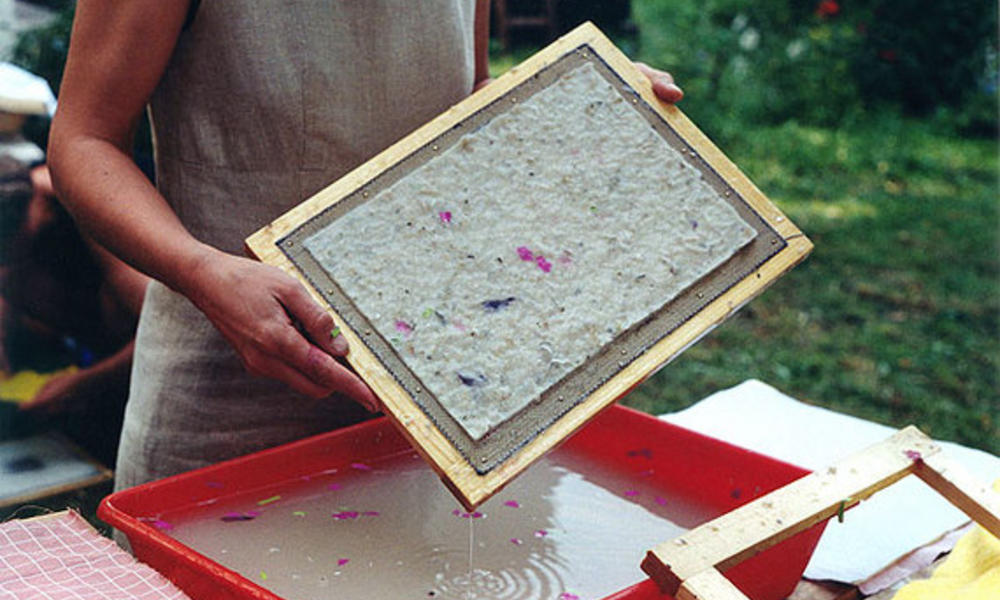
/EN/
Howdy!
Coming from Germany, I am very used to recycling, especially when it comes to paper. Germans recycle about 80% of all their paper, meanwhile the recycling of paper is nearly non-existent in Romania.
But why go though all the work of carefully selecting the paper and recycling it to new paper? Unlike plastic or metal products, paper is made out of wood which can easily be regrown.
One big reason would be in order to save water. The production of 40g new paper needs 2,8 L of water, compared to 0,2 L for recycling paper. It also becomes a lot more polluted in the process of producing new paper, than in the one for recycled paper. If you are interested in finding out why saving water is so important for the environment, read Robert’s article about water, coming up in the next days.
Another point is, that the chemicals used in order to make paper out of wood are often very toxic and bad for the environment, unlike the ones used for the recycling process. This is especially true for the bleaching of newly made paper, which is either not done with recycling paper or done with non-toxic chemicals.
The recycling process for paper also needs 1/3 of the energy of producing newly made paper.
It also needs wood. While trees can be regrown, it takes years for them to do so and if we use up to much wood to regrow, the amount of forests in a country decrease and decrease, as is currently the case in Romania.
If you want to help the environment, try to sort paper and put it into the blue recycling bin, buy recycling paper instead of normal one and use both sides of paper.
And here is a little guide for recycling paper yourself:
- Put small pieces of paper [tear them apart by hand] into a bucket of water and leave it alone for three days
- Nail a fly screen onto a wooden frame (about the size of a piece of paper)
- Blend the water-paper-mix with a blender. If the mass is to solid, add warm water.
- Put the paper-mix into a big container, add water (About a quater of the paper mass). Take the frame from step 2 and pull it slowly though the water, till their is a small layer of paper on it.z
- Tear the layer slowly from the frame and leave it to dry
/RO/
Servus!
Venind din Germania sunt obișnuită să reciclez, mai ales hârtie. Nemții reciclează în jur de 80% din hârtie, în timp ce reciclarea hârtiei în România e aproape inexistentă.
Dar de ce să trecem prin acest proces de selectare a hârtiei și reciclare? Spre deosebire de plastic și metal, hârtia e făcută din lemn, care poate fi înlocuit prin plantare.
Un motiv important pentru a recicla este pentru a economisi apă. Pentru a produce 40gr de hârtie nouă e nevoie de 2.8L apă, în timp ce pentru aceeași cantitate prin reciclare e nevoie de 0.2L. De asemenea apa devine mai poluată la finalul acestui proces, decât cea folosită la reciclare. Dacă vreți să aflați mai multe despre importanța apei pentru mediu, citiți articolul lui Robert (urmează în următoarele zile, fiți pe faza).
Un alt motiv ar fi chimicalele folosite pentru a crea hârtie, care sunt adesea toxice și nocive pentru mediu, spre deoasebire de cele pentru reciclare. Asta mai ales din cauza înălbitorilor folosiți pentru hârtie, care nu sunt folosiți la hârtia reciclată, ori sunt folosiți unii non-toxici.
În plus, procesul de reciclare a hârtiei are nevoie de doar o treime din energia folosită pentru hârtia nouă. Apoi mai are nevoie de lemn. Chiar dacă pădurile pot refăcute, durează ani de zile pentru acest lucru, iar dacă folosim pădurile prea mult, zonele împădurite scad vizibil, cum e cazul României.
Dacă vrei să ajuți mediul, încearcă să sortezi hârtia și pune-o în containerul albastru, cumpără hârtie reciclată în loc de cea obișnuită și mai ales folosește ambele părți ale hârtiei.
Aici aveți un mic ghid de reciclare a hârtiei:
- Pune bucățele de hârtie (rupte cu mâna) într-o găleată cu apă și lasă-le trei zile.
- Prinde o pânză de țânțari pe o ramă de lemn (de mărimea hârtiei pe care vei să o produci)
- Amestecă compoziția de hârtie cu apă cu un blender. Dacă e prea tare, mai pune puțină apă caldă.
- Transferă amestecul într-un vas mai mare și mai pune apă (un sfert din cantitatea de hârtie). Ia rama de la punctul 2 și trece-o ușor prin apă, până ai un mic strat de hârtie pe ea.
- Desfă stratul ușor de pe ramă și lasă-l să se usuce.
Milena este în România pentru o perioadă de cinci luni, din iulie 2018 până în noiembrie 2018, în cadrul proiectului Building Youth supportive Communities – Environment [2017-2-RO01-KA105-037748] proiect cofinanțat de Uniunea Europeană prin Programul Erasmus+ și implementat în România de către Curba de Cultură.
Why do we need forests and how can we keep them / De ce avem nevoie de păduri și cum putem să le păstrăm
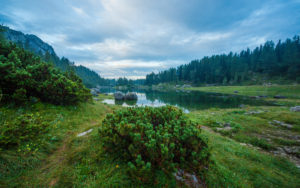
[EN] I can’t remember if there was a time when I wasn’t in love with nature, could be because I grew up in a place where I could play among the trees anytime I wanted. I come from a small country in central Europe called Slovenia and the thing I adore most about it is the fact that 66% of it is covered by forests. Those provide a vital environment for many species. There are over 3000 different fern and flower species along with 50000 different animal species thriving in my country so I’m very happy that over 11% of our land is protected territory.
Upon my arrival in Romania I was initially shocked by the vast flat-lands but in a country as big as Romania is I was sure to find some landscapes more suitable for my soul. It comes as no surprise the country has plenty of green forests to offer. Not only that, there are 3,700 plant species identified, out of which 23 are declared natural monuments, 74 are extinct species, 39 are endangered species, 171 are vulnerable species and 1253 rare species. 33.792 animal species have been identified, out of which 33.085 invertebrates and 707 vertebrates. So there are a lot of reasons to protect the natural environment, not only in my country and Romania but also everywhere else.
But a question comes to mind: how? How can you as an insignificant individual help something so ancient and bigger than you can imagine? Surely none of us will single-handedly prevent climate change, deforestation and pollution, but every little bit helps. The easiest way and the one that unfortunately doesn’t pop into everyone’s mind is simple: just don’t throw your trash on the floor after you no longer need it. If you were able to carry the package of chips with you before it was empty how can you not take the empty one back to the nearest bin? Using recycled paper also helps a lot as no new trees were cut down to help you with your daily lives.

Hemp products are also a very good alternative as the plant gives valuable resources in a shorter time; it also isn’t very demanding and doesn’t exhaust the soil as much. With wide variety of use it truly is a great choice, from food to building material: is there anything it can’t do?
Another simple solution is to opt for a walk or ride on a bicycle instead of taking a car, using public transportation instead of a personal vehicle also doesn’t seem as much but definitely helps.
But back to my main point: why do we need trees in the first place? It’s not only because they are nice to look at, even though studies showed patients with a green view had a quicker recovery. The obvious reason is because they produce oxygen and well, that’s literally something you can’t live without, them filtering over 21 kg of carbon dioxide per year (a single tree) is also pretty amazing.
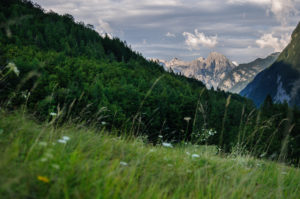
The root system prevents soil erosion, their shade can help cool down urban areas, also saving you money on cooling down your house in summer and providing protection from winds which can help lower costs of your winter heat bill. Air pollution isn’t the only pollution they help with, noise pollution is also lowered in areas with trees. To top it off just think about all the food they provide, from fruits to syrup and playing a vital role in honey production. There are also medicinal properties that can be extracted from a number of trees (apple tree, common ash, hazel, beech tree, cedar and black walnut just as an example). So on your next walk through the woods I hope you will see these ancient beauties as the amazing living things they are and will be mindful of your surrounding. Plus points if you take out more trash than you brought. Thanks for your read, hope to talk to you soon, hugs and kisses until then.
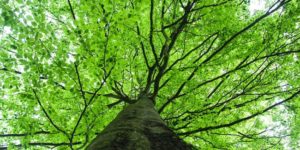
[RO] Nu-mi pot aminti dacă era un timp când nu eram îndrăgostit de natură, ar putea fi pentru că am crescut într-un loc unde m-am putut juca printre copaci oricând am vrut. Vin dintr-o țară mică din Europa centrală numită Slovenia, iar lucrul pe care îl ador cel mai mult la ea este faptul că 66% din ea este acoperită de păduri. Acestea asigură un mediu vital pentru multe specii. Există peste 3000 de specii diferite de ferigi și flori pe lângă 50000 de specii diferite de animale prosperând în țara mea așa că sunt foarte fericit că peste 11% din țara noastră e teritoriu protejat.
La sosirea mea în România am fost inițial șocat de vastele câmpii, dar într-o țară așa mare cum e România eram sigur că o să găsesc niște peisaje mai potrivite pentru sufletul meu. Nu a venit ca o surpriză că țara are o grămadă de păduri verzi de oferit. Nu numai asta, sunt 3,700 de specii de plante identificate, dintre care 23 sunt declarate monumente naturale, 74 sunt specii extincte, 39 sunt specii pe cale de dispariție, 171 sunt specii vulnerabile și 1253 specii rare. 33.792 de specii de animale au fost identificate, dintre care 33.085 nevertebrate și 707 vertebrate. Așa că sunt o grămadă de motive să protejezi mediul natural, nu numai în țara mea și în România dar de asemenea în toate celelalte locuri.
Dar o întrebare vine în minte: cum? Cum poți tu ca un individ insignifiant să ajuți ceva așa de străvechi și mai mare decât îți poți imagina? Cu siguranță nici unul dintre noi nu va preveni de unul singur schimbarea climatică, defrișările și poluarea, dar fiecare lucru micuț ajută. Cel mai ușor mod și cel care din păcate nu apare în mintea tuturor e cel mai simplu: doar nu arunca gunoiul pe jos după ce nu mai ai nevoie de el. Dacă ai putut să cari pachetul de chipsuri cu tine înainte să fie gol cum poți să nu îl iei pe cel gol înapoi la cel mai apropiat coș? Folosirea hârtiei reciclate de asemenea ajută mult căci nici un nou copac nu este tăiat pentru a te ajuta cu viața de zi cu zi.

Produsele din cânepă sunt de asemenea o alternativă foarte bună, planta dând resurse valoroase într-un timp mai scurt; de asemenea nu necesită foarte multe resurse și nu extenuează solul la fel de mult. Cu o varietate largă de folosiri e cu adevărat o alegere minunată, de la mâncare la material de construcții: e ceva ce nu poate să facă?
O altă soluție simplă este să optezi pentru a merge sau a face o plimbare cu bicicleta în loc de a lua mașina, de a folosi mijloacele de transport în comun în loc de un vehicul personal de asemenea nu pare de parcă e așa mare lucru dar ajută cu certitudine.
Dar înapoi la principalul meu punct: de ce avem nevoie de copaci de fapt? Nu e numai pentru că sunt frumoși când te uiți la ei, deși studii au arătat că pacienții cu o priveliște verde au avut o recuperare mai rapidă… Motivul evident este pentru că produc oxigen și ei bine, asta e literalmente ceva fără de care nu poți trăi, ei filtrând peste de 21 kg de dioxid de carbon pe an (un singur copac) e deasemenea destul de uimitor.
Sistemul de rădăcini previne eroziunea solului, umbra lor poate ajuta la răcirea zonelor urbane, de asemenea salvându-ți banii la a îți răci casa vara și asigurând protecție împotriva vântului ceea ce poate ajuta la micșorarea costurilor facturii tale de iarnă. Poluarea aerului nu e singura poluare cu care ajută, poluarea fonică e de asemenea micșorată în zone cu copaci. Peste toate astea doar gândește-te la toată mâncarea pe care o asigură, de la fructe la sirop și jucând un rol vital în producția de miere. Sunt de asemenea proprietăți medicinale care pot fi extrase dintr-un număr de copaci (măr, frasin comun, castan, fag, cedru și nuc negru doar ca un exemplu). Deci următoarea ta plimbare prin pădure sper că vei vedea aceste frumuseți antice ca pe minunatele lucruri vii care sunt și vei fi atent la împrejurimile tale. Puncte în plus dacă pleci cu mai mult gunoi decât ai adus. Mulțumesc pentru lectură, sper să vorbim curând, îmbrățișări și pupici până atunci.
Robert este în România pentru o perioadă de cinci luni, din iulie 2018 până în noiembrie 2018, în cadrul proiectului Building Youth supportive Communities – Environment [2017-2-RO01-KA105-037748] proiect cofinanțat de Uniunea Europeană prin Programul Erasmus+ și implementat în România de către Curba de Cultură.
Small everyday things that make a difference for the planet / Mici lucruri din viața de zi cu zi care fac o diferență pentru planetă
[EN] Embarking on an environmental volunteering project is something very personal. This is not a regular job that I do from 8 to 5 and forget about it for the rest of the day. It reflects my values, my desired way of life. Therefore, when I came to Romania and started working on this project, I also started thinking about my daily life and my routines. And I discovered plenty of situations where I was behaving unsustainably, because of routines that I follow without thinking, and things I do out of laziness or comfort or because I simply don’t know any other solution. And so, I started observing and changing small things in my daily life. At first it seemed to be a big deal to change routines, but if done in the right way, step by step the new behaviour becomes the routine, and things are getting done automatically.
But let’s keep it concrete, and stick to some examples from my daily life here in Izvoarele.
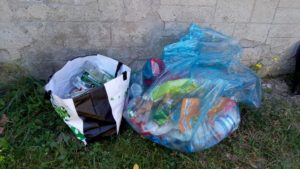 When I moved in, recycling was something that was done, but not well done. The closest recycling bins are 700 meters away, so it was easier to throw most of the stuff into the wet waste, which is collected once a week. All you have to do is to put the container on the street. And although I was used to recycling back home in Portugal, I found myself adapting to my housemates’ behaviour. When the commune introduced the blue bags for plastic and metal that are collected every two weeks, we took it as an impetus to rethink our household and started separating wet waste, organic, blue bag, glass and paper. All it took was to think a bit about what waste we produce and where in the house.
When I moved in, recycling was something that was done, but not well done. The closest recycling bins are 700 meters away, so it was easier to throw most of the stuff into the wet waste, which is collected once a week. All you have to do is to put the container on the street. And although I was used to recycling back home in Portugal, I found myself adapting to my housemates’ behaviour. When the commune introduced the blue bags for plastic and metal that are collected every two weeks, we took it as an impetus to rethink our household and started separating wet waste, organic, blue bag, glass and paper. All it took was to think a bit about what waste we produce and where in the house.
The main stake of our waste is produced while cooking/eating, so placing the organic waste and recycling bins in the kitchen or nearby makes sense. If they are on the other side of the house, the trash is more likely to end in the wet waste that is handily located under the sink. After all, in our daily routines we intuitively do the easiest and most comfortable thing.
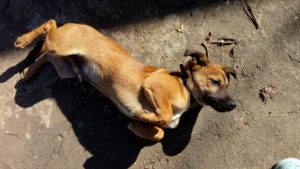 We have a dog, so it makes sense to have a bin for the empty food cans and bags somewhere near the feeding bowl. In the rooms, the trash mainly consists of old papers and bills, so we put small boxes for paper there. We also put a box in the bathroom for the empty toilet paper rolls. Once we figured where to put which bins, recycling became an easy task, a natural routine.
We have a dog, so it makes sense to have a bin for the empty food cans and bags somewhere near the feeding bowl. In the rooms, the trash mainly consists of old papers and bills, so we put small boxes for paper there. We also put a box in the bathroom for the empty toilet paper rolls. Once we figured where to put which bins, recycling became an easy task, a natural routine.
Some of the materials we consider waste are actually reusable. For example, whenever I am going somewhere and need to take something to drink, I fill a glass bottle with tap water. And we save all the jars, wash them and put jam or other stuff inside. Paper is saved to start fire in the ovens in winter, carton boxes are used for shopping and to collect fruits.
As we decided to collect our organic waste separately, the question arose of what to do with it as there is no separate collection of organic waste in Romania (currently, in only 8 European countries organic waste is collected by the communes [1]). But as we live on the countryside and have a big garden, we decided to start composting.
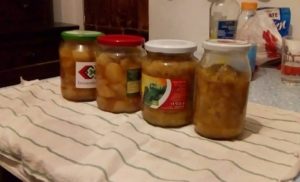 Our garden has some fruit trees, and lately we have been flooded with pears, apples and prunes. Adrianna started to make jam and compote out of them. And there is no reason why we shouldn’t: it’s free, it’s healthy, it’s tasty. But well, it requires work. And when Adrianna left, no one took over this task, so that a lot of the fruits were just rotting on the ground. At some point we started picking them up and storing them in the basement (hoping that it is cold and dry enough) and we figured out that it is not that hard to handle them. There are plenty of ways to make them storable: besides jam and compote, we can make dry fruits, juice, pies…
Our garden has some fruit trees, and lately we have been flooded with pears, apples and prunes. Adrianna started to make jam and compote out of them. And there is no reason why we shouldn’t: it’s free, it’s healthy, it’s tasty. But well, it requires work. And when Adrianna left, no one took over this task, so that a lot of the fruits were just rotting on the ground. At some point we started picking them up and storing them in the basement (hoping that it is cold and dry enough) and we figured out that it is not that hard to handle them. There are plenty of ways to make them storable: besides jam and compote, we can make dry fruits, juice, pies…
Not everyone has the garden, the patience or the time to grow their own food, but still we can be aware of what we eat and ask ourselves if it is worth buying imported products if there are national, even local ones available. Buying local products reduces the pollution from transport, besides helping the local economy. And so, slowly I grew the habit of checking the labels to see where the products come from. And at one point I decided to buy only fruits and vegetables grown in Romania, and after a while I extended this to dairy products and meat. I also started to go to the market and the butcher, as there the chances are higher to get local products.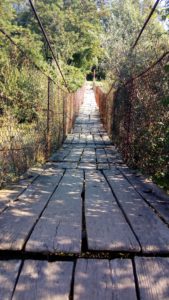
Another important part of our daily routines is the way to work. In Portugal I mainly used the bicycle in my daily life, but in Izvoarele the roads are either full of traffic or in a desolate state. But walking to work turned out to be a good option as well, it frees my mind and it is healthy both for me and for the environment.
Of course, there are a lot more things that I can change in my daily life. My next goal is to reduce the amount of plastic waste I produce, so I will start bringing my own bags to the market, looking for eco-friendlier packaged products, and so on.
[1] https://www.compostnetwork.info/policy/biowaste-in-europe/separate-collection/
[RO]
Îmbarcarea într-un proiect de voluntariat în domeniul mediului e ceva foarte personal. Ăsta nu este un loc de muncă obișnuit la care mă duc de la 8 la 5 și de care uit pentru restul zilei. Îmi reflectă valorile, felul de viață pe care doresc să îl trăiesc. Așadar, când am venit în România și am început să lucrez la acest proiect, am început de asemenea să mă gândesc la viața mea de zi cu zi și la rutinele mele. Și am descoperit o mulțime de situații unde mă comportam nesustenabil, din cauza unor rutine pe care le aveam fără să mă gândesc la ele, și lucruri pe care le fac din lene sau comfort sau pentru că pur și simplu nu știu altă soluție. Și deci, am început să observ și să schimb mici lucruri în viața mea de zi cu zi. La început a părut să fie mare lucru să schimb rutine, dar dacă e făcut în modul potrivit, pas cu pas noul comportament devine rutină, iar lucrurile sunt făcute automat.
Dar să o ținem concret, și să rămânem pe niște exemple din viața mea de zi cu zi aici în Izvoarele.
 Când m-am mutat aici, reciclarea era ceva ce se făcea, dar nu se făcea bine. Cele mai apropiate coșuri de reciclare sunt la 700 de metri depărtare, așa că era mai ușor să arunc majoritatea lucrurilor în gunoiul menajer, care este colectat o dată pe săptămână. Tot ce trebuie să faci este să pui containerul pe stradă. Și deși eram obișnuit cu reciclarea acasă în Portugalia, am început să mă adaptez la comportamentul celor cu care locuiam. Când comuna a introdus sacii albaștrii pentru plastic și metal care sunt colectați odată la două săptămâni, am luat-o ca pe un imbold să regândim gospodăria noastră și am început să separăm gunoiul menajer, organic, sacul albastru, sticlă și hârtie. Tot ce a fost nevoie a fost să ne gândim puțin la ce gunoi producem și unde anume în casă.
Când m-am mutat aici, reciclarea era ceva ce se făcea, dar nu se făcea bine. Cele mai apropiate coșuri de reciclare sunt la 700 de metri depărtare, așa că era mai ușor să arunc majoritatea lucrurilor în gunoiul menajer, care este colectat o dată pe săptămână. Tot ce trebuie să faci este să pui containerul pe stradă. Și deși eram obișnuit cu reciclarea acasă în Portugalia, am început să mă adaptez la comportamentul celor cu care locuiam. Când comuna a introdus sacii albaștrii pentru plastic și metal care sunt colectați odată la două săptămâni, am luat-o ca pe un imbold să regândim gospodăria noastră și am început să separăm gunoiul menajer, organic, sacul albastru, sticlă și hârtie. Tot ce a fost nevoie a fost să ne gândim puțin la ce gunoi producem și unde anume în casă.
Cea mai mare porțiune din gunoiul nostru este produs gătind/mâncând, așa că să poziționăm deșeurile organice și coșurile de reciclare în bucătărie sau în apropiere are sens. Dacă se află în cealaltă parte a casei, gunoiul e mult mai probabil să ajungă în gunoiul menajar care e localizat la îndemână sub chiuvetă. La urma urmelor, în rutina noastră zilnică facem intuitiv cel mai ușor și mai comfortabil lucru.
 Avem un câine, așa că are sens să avem un coș pentru conservele și pungile goale de mâncare undeva lângă bolul unde îl hrănim. În camere, gunoiul e constituit în principal din hârtii vechi și facturi, așa că am pus mici cutii pentru hârtie acolo. Am pus de asemenea o cutie în baie pentru rolele goale de hârtie igienică. Odată ce ne-am dat seama unde să punem care coșuri, reciclarea a devenit o sarcină ușoară, o rutină ce ne vine în mod natural.
Avem un câine, așa că are sens să avem un coș pentru conservele și pungile goale de mâncare undeva lângă bolul unde îl hrănim. În camere, gunoiul e constituit în principal din hârtii vechi și facturi, așa că am pus mici cutii pentru hârtie acolo. Am pus de asemenea o cutie în baie pentru rolele goale de hârtie igienică. Odată ce ne-am dat seama unde să punem care coșuri, reciclarea a devenit o sarcină ușoară, o rutină ce ne vine în mod natural.
Unele din materialele pe care le considerăm gunoi sunt de fapt refolosibile. Spre exemplu, de fiecare dată când merg undeva și am nevoie să iau ceva de băut, umplu o sticlă de sticlă cu apă de la robinet. Și păstrăm toate borcanele, le spălăm și punem gem sau alte lucruri înăuntru. Hârtia este păstrată pentru a porni focuri în sobe iarna, cutiile de carton sunt folosite pentru cumpărături și pentru a colecta fructe.
Având în vedere că am decis să ne colectăm deșeurile organice separat, a răsărit întrebarea ce să facem cu ele având în vedere că nu există colectare separată a deșeurilor organice în România (în mod curent, în doar 8 țări Europene deșeurile organice sunt colectate de autorități locale [1]). Dar cum locuim la țară și avem o grădină mare, am decis să începem să facem compost.
 Grădina noastră are niște pomi fructiferi, și în ultima vreme am fost inundați cu pere, mere și prune. Adrianna a început să facă gem și compot din ele. Și nu e nici un motiv pentru care nu am face: e gratis, e sănătos, e gustos. Dar, însă, necesită muncă. Și când Adrianna a plecat, nimeni nu a preluat această sarcină, așa că o grămadă din fructe pur și simplu putrezeau pe jos. La un moment dat am început să le adunăm și să le depozităm în pivniță (sperând că e suficient de rece și uscat) și ne-am dat seama că nu e așa greu să ne ocupăm de ele. Există destule feluri prin care să le facem depozitabile: pe lângă gem și compot, putem face fructe uscate, suc, plăcinte…
Grădina noastră are niște pomi fructiferi, și în ultima vreme am fost inundați cu pere, mere și prune. Adrianna a început să facă gem și compot din ele. Și nu e nici un motiv pentru care nu am face: e gratis, e sănătos, e gustos. Dar, însă, necesită muncă. Și când Adrianna a plecat, nimeni nu a preluat această sarcină, așa că o grămadă din fructe pur și simplu putrezeau pe jos. La un moment dat am început să le adunăm și să le depozităm în pivniță (sperând că e suficient de rece și uscat) și ne-am dat seama că nu e așa greu să ne ocupăm de ele. Există destule feluri prin care să le facem depozitabile: pe lângă gem și compot, putem face fructe uscate, suc, plăcinte…
Nu toată lumea are grădina, răbdarea sau timpul să își crească propria mâncare, însă tot putem fi conștienți de ceea ce mâncăm și ne putem întreba dacă merită să cumpărăm produse importate dacă sunt unele naționale, chiar locale disponibile. Cumpăratul de produse locale reduce poluarea din transport, pe lângă că ajută economia locală. Și așadar, încetișor am dezvoltat obiceiul de a verifica etichetele pentru a vedea de unde vin produsele. La un moment dat am decis să cumpăr doar fructe și legume crescute în România, și după o vreme am extins asta și la produse lactate și carne. Am început de asemenea să mă duc la piață și la măcelar, șansele de a găsi produse locale fiind mai mari acolo.
 O altă parte importantă din rutina noastră zilnică este drumul către muncă. În Portugalia foloseam în principal bicicleta în viața mea de zi cu zi, dar în Izvoarele drumurile sunt ori pline de trafic ori într-o stare proastă. Dar mersul pe jos la muncă s-a dovedit a fi o opțiune bună de asemenea, îmi eliberează mintea și este sănătos atât pentru mine cât și pentru mediu.
O altă parte importantă din rutina noastră zilnică este drumul către muncă. În Portugalia foloseam în principal bicicleta în viața mea de zi cu zi, dar în Izvoarele drumurile sunt ori pline de trafic ori într-o stare proastă. Dar mersul pe jos la muncă s-a dovedit a fi o opțiune bună de asemenea, îmi eliberează mintea și este sănătos atât pentru mine cât și pentru mediu.
Desigur, mai sunt multe lucruri pe care le pot schimba în viața mea de zi cu zi. Următorul meu țel este să reduc cantitatea de deșeuri din plastic pe care o produc, așa că voi începe să îmi aduc propriile pungi la magazin, mă voi uita după produse ambalate mai prietenoase cu mediul (eco-friendly), și așa mai departe.
[1] https://www.compostnetwork.info/policy/biowaste-in-europe/separate-collection/
Tim este în România pentru o perioadă de șapte luni, din mai 2018 până în noiembrie 2018, în cadrul proiectului Building Youth supportive Communities – Environment [2017-2-RO01-KA105-037748] proiect co-finanțat de Uniunea Europeană prin Programul Erasmus+ și implementat în România de către Curba de Cultură.
Tips and tricks for unfortunate hikes / Sfaturi și trucuri pentru drumeții nenorocoase
[EN] The summer is coming to an end. But that doesn’t mean we will stop hiking in the mountains. There are so many good ways in the Carpathians mountains. Let’s have some fresh air and enjoy the view. The color of autumn…
But wait, where are my friends? Where is the path?
Tip n°1: Calm
Stay calm and put for the time being. Don’t try to run to your friends. Take a time to think and answer a few questions. Where are you? Where do your friends and the path is? Do you have any means of communications?
Tip n°2: Observe
If you didn’t really look at the map, or plan your walk, look at what is around you. Any traces of civilization that might help you? Signs or far away people? Any traces of the paths? What are the main features? Peaks? Special rock formation? Special tree?
Where did you walk before being there?
Tip n°3: Communication
A good thing is that in Romania even in the mountains you often have a good signal. But you have to have a charged phone. Yep don’t listen to Streaming music all the way. Talking about experience…
So if you have your phone charged and signal you can of course you can try to reach one of your friends that have some idea of the way. You can have some help by describing what you have observed. If your friend is not reachable, you can try the number of the “cabanas” / refuges around if you have them, or the local tourism office. Or some people that know the place. As a last resort you can even call the 112 to make them help you.
The basic information to give is always: where, what, who, and some idea of how to get there, in that order. So if your battery is failing at least they’ll have the most important pieces of information first.
Starting to find your way yourself
Of course if you know the path or a good person to explain you the way, it should be easier to just try to find your way back. But that’s not always the case.
A first thing to do would be to have some sense of orientation. What is your objective? If you have some idea of the map and you remember that you came roughly by the south east, well let’s look for that.
So how to find the north?
I guess you’re not really the super scout so you don’t have a compass. And assuming you don’t have signal, you don’t have data to download some compass “app” (yep an app for everything I guess… )
We all heard the stories about the moss on the tree. The truth is, yes the moss grows more on the side facing the North on the trees because it’s less exposed to the sun. Buuut for that you would need, you guessed it, trees. And a not too wet area where they have moss everywhere…

Second known trick: find Polaris, the polar star. As shown below, the trick is to use the two stars from the back of the big Dipper and continue them to find the last star of the small Dipper. That is Polaris, and that shows you where the north is. If you put yourself in the front of it, you have west on your left, east on your right, and behind you is the south. The problem with this… yes it’s only doable in the night and you don’t really walk in the night, even with some lights with you. And I wouldn’t advise you to, because the distances are really not the same in the eye, and the terrain might have rocks or holes you don’t see well.
 Third trick, maybe the most useful. Find a stick or use a pen, a fork or anything that can cast a shadow. Mark the top of the shadow. Wait 10-15 minutes. Mark the new top of the shadow. The sun had moved from East to West. The shadow shows the opposite (West to East). So if you put your left foot on the first mark, and your right foot on the second mark, you’ll face the north. Only problem… when there is no sun.
Third trick, maybe the most useful. Find a stick or use a pen, a fork or anything that can cast a shadow. Mark the top of the shadow. Wait 10-15 minutes. Mark the new top of the shadow. The sun had moved from East to West. The shadow shows the opposite (West to East). So if you put your left foot on the first mark, and your right foot on the second mark, you’ll face the north. Only problem… when there is no sun.
There is a lot of more tricky tricks like a trick with the markers on a watch if you can only guess where the sun is. If you’re interested go to https://www.wikihow.com/Find-True-North-Without-a-Compass)
If you get stuck somewhere
You get stuck somewhere in the beautiful Carpathians mountains because of the weather or because you’re lost or any other reason there is a few things useful to do.
Tip n°3 bis : Communication again
If you can’t reach anyone and you feel you will have to stay there for a long, try to write “help” or “SOS” at any visible place, being from the sky or from the traces of tracks, or any important features. You might sign it to with your name. But don’t alarm people too much if it’s only a little setback.
Tip n°4: Inventory / Observing again
If you’re stuck you’d need to check what resources you have. First, do you have drinkable water? What food stock do you have? Do you have a shelter? Do you have fire?
For water you’d need to find a fresh water point and boil it… if you can.
For food, some knowledge on the eatable plants, berries and mushrooms always helps… but if you don’t know pretty please don’t poison yourself.
For shelter you’d need some skills of sewing a bit some branches together. Find a suitable area (not too wet, too windy, some trees around to help you build it. It’s the kind of things you only really learn by practicing so don’t expect miracles, just a small temporary spot to cover you from the wind and the rain might come handy.
Having a lighter is also very useful in those situations. A small fire can help you boil water to make it drinkable and warm you up to sleep. There is again a lot of little ways of lighting a spark on dry wood. Some glasses or a block of ice used as a lens to concentrate the sun for example. But most of them require some ropes of a knive… Those things that, again, you might have not taken.
So if you’re interested in making fire, poke around the web, you’ll have some ideas 🙂
Conclusion
In nature, a knife or a multiuse knife can go a long way. Some water and lighter can also be useful in a lot of cases, not only the extreme ones. Good shoes and a good backpack can keep you from random pains. Knowing a bit the area is also a plus.
In one word, please, prepare your trip 😉

Oh and please, this is useful advices but in reality, if you’re a bit prepared, you won’t have to worry too much.
So enjoy some wonderful views !
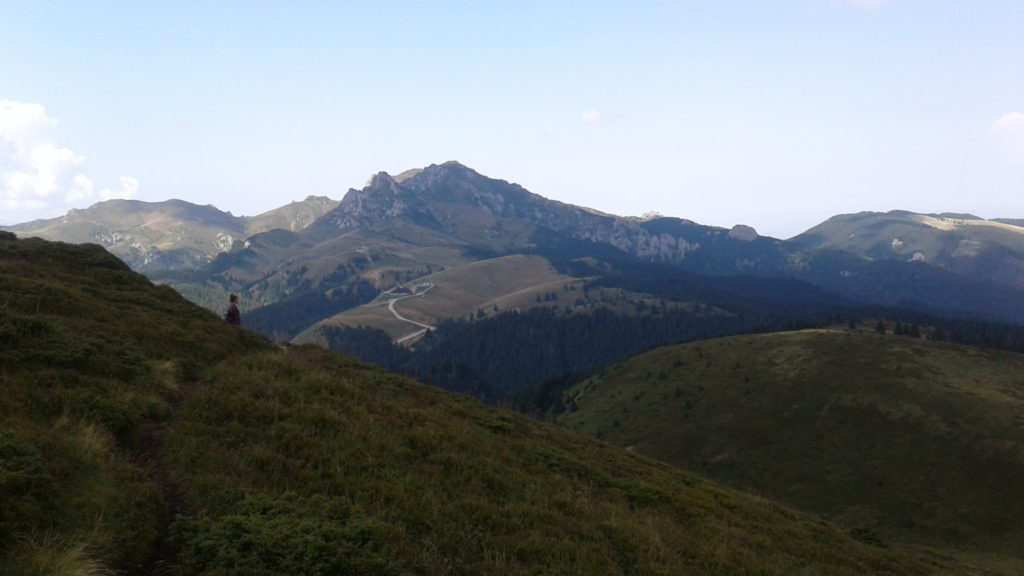
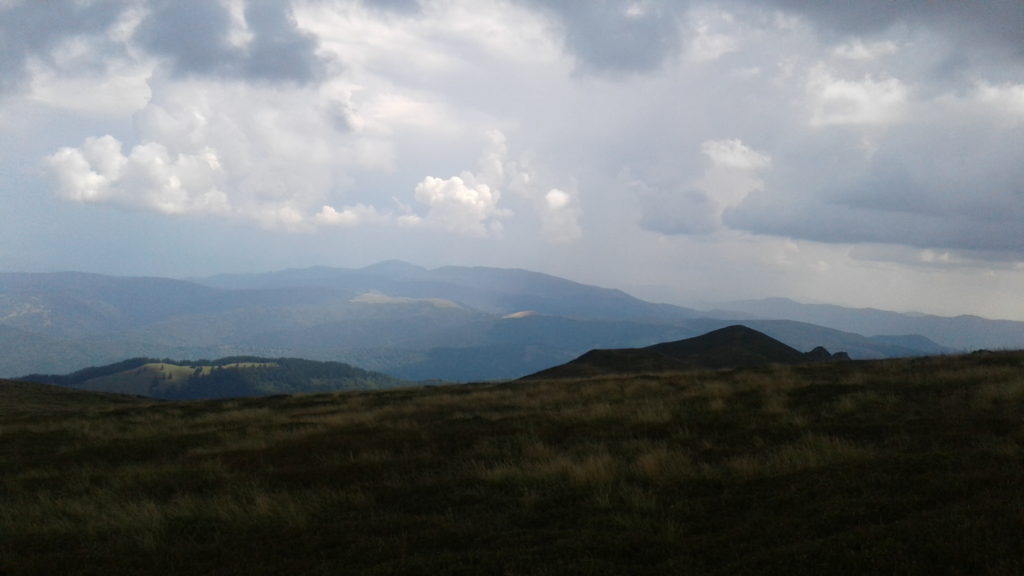
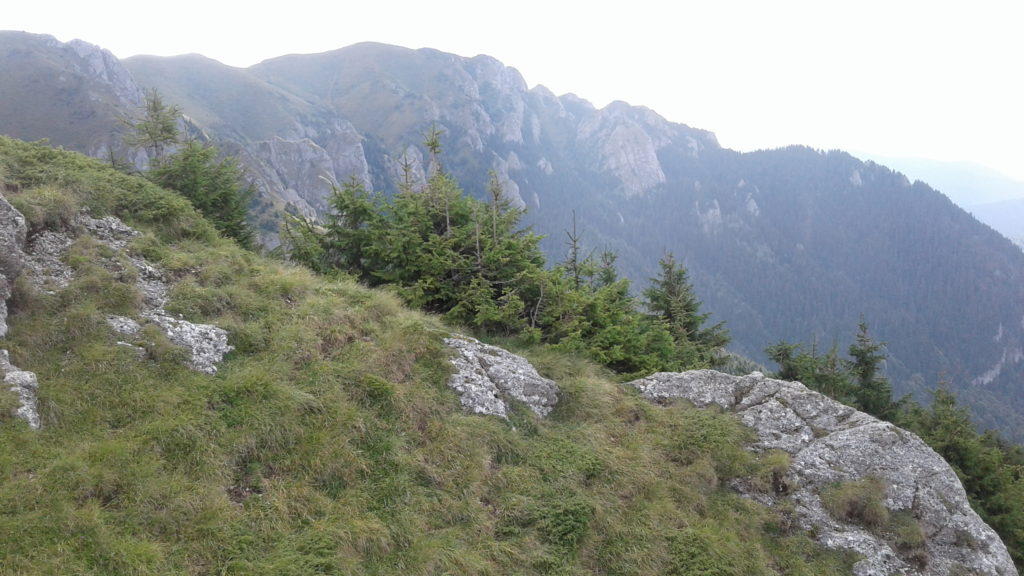
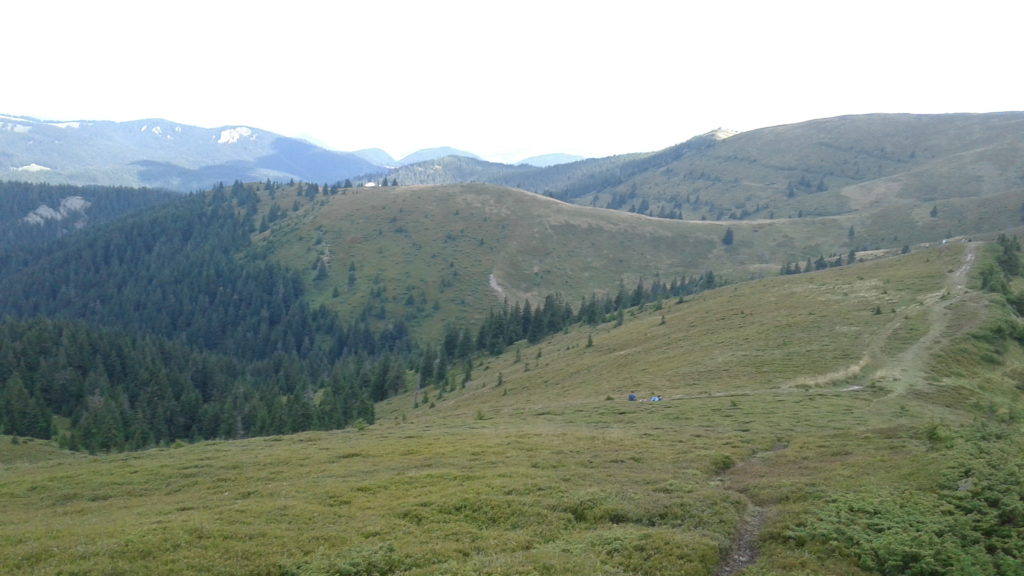
Blog inspired by some wikihow (such as https://www.wikihow.com/Find-True-North-Without-a-Compass) and this article http://blog.theclymb.com/tips/10-tips-for-wilderness-survival/
—
[RO] Vara se apropie de sfârșit. Dar asta nu înseamnă că ne vom opri din drumeții în munți. Sunt atât de multe rute bune în Munții Carpați. Hai să inhalați aer curat și bucurați-vă de priveliște. Culoarea toamnei…
Dar așteaptă, unde îmi sunt prietenii? Unde este poteca?
Sfatul n°1: Calm
Stai calm și pe loc momentan. Nu încerca să fugi la prietenii tăi. Ia un timp să te gândești și să răspunzi la câteva întrebări. Unde ești? Unde îți sunt prietenii și unde este calea? Ai vreun mijloc de comunicare?
Sfatul n°2: Observă
Dacă nu te-ai prea uitat la hartă, sau nu ți-ai plănuit plimbarea, uită-te la ce se află în jurul tău. Vreo urmă de civilizație care te-ar putea ajuta? Semne sau oameni în depărtare? Vreo urmă a cărării? Care sunt trăsăturile principale? Piscuri? Formațiuni de roci unice? Copaci speciali?
Unde ai mers înainte de a fi acolo?
Sfatul n°3: Comunicare
Un lucru bun este că în România ai deseori un semnal bun chiar și în munți. Dar trebuie să ai un telefon încărcat. Yep, nu asculta muzică Streaming music tot drumul. Vorbind despre experiență…
Deci dacă ai telefonul încărcat și semnal poți desigur să încerci să îl contactezi pe unul dintre prietenii tăi care au o idee despre drum. Poți avea niște ajutor descriind ceea ce ai observat. Dacă prietenul tău nu este accesibil, poți încerca numărul de la “cabane” / refugii din jur dacă le aveți, sau oficiul local de turism. Sau niște oameni care știu locul. În ultimă instanță poți chiar să suni la 112 și să le spui să te ajute.
Informația de bază pe care să o dai e întotdeauna: unde, ce, cine, și o idee vagă despre cum se ajunge acolo, în ordinea asta. Deci dacă bateria ta cedează măcar vor avea cea mai importantă parte de informație mai întâi.
Începe să îți găsești calea de unul singur
Desigur dacă știi drumul sau o persoană bună să îți explice calea, ar trebui să fie mai ușor să încerci pur și simplu să îți găsești ruta înapoi. Dar acesta nu este mereu cazul.
Un prim lucru de făcut ar fi să obți niște simț al orientării. Care este obiectivul tău? Dacă ai vreo idee despre hartă și îți amintești că ai venit aproximativ dinspre sud est, păi hai să ne uităm după asta.
Așadar, cum să găsești Nordul?
Bănuiesc că nu ești chiar super cercerașul și deci nu ai o busolă. Și presupunând că nu ai semnal, nu ai date mobile să downloadezi vreo aplicație (“app”) de busolă (yep, un app pentru orice bănuiesc… )
Cu toții am auzit poveștile despre mușchiul de pe copaci. Adevărul este, da, cel mai mult mușchi crește mai mult pe partea dinspre Nord pe copaci pentru că este mai puțin expusă la soare. Daaar pentru asta ai avea nevoie de, ai ghicit-o, copaci. Și o suprafață nu prea umedă unde au mușchi peste tot…

Al doilea truc știut: găsește Polaris, Steaua Polară. Așa cum este arătat mai jos, secretul este să folosești cele două stele din spatele Carului Mare și să le continui pentru a găsi ultima stea a Carului Mic. Aceea e Polaris, și asta îți arată unde e Nordul. Dacă te pui în fața ei, ai vest în stânga ta, est în dreapta, și în spatele tău este Sudul. Problema cu asta este… da, merge să o faci doar noaptea și noaptea nu prea mergi, chiar și cu niște lumini cu tine. Și nu te-aș sfătui, pentru că distanțele nu sunt chiar la fel în văzul ochiului, iar terenul ar putea avea pietre sau găuri pe care tu nu le vezi bine.
 Al treilea truc, și poate cel mai util. Găsește un băț sau folosește un pix, o furculiță sau orice care poate arunca o umbră. Marchează vârful umbrei. Așteaptă 10-15 minute. Marchează noul vârf al umbrei. Soarele s-a mutat de la Est la Vest. Umbra arată opusul (Vest spre Est). Deci dacă îți pui piciorul stâng pe primul marcaj, și piciorul drept pe al doilea marcaj, vei fi cu fața spre Nord. Singura problemă… când nu este soare.
Al treilea truc, și poate cel mai util. Găsește un băț sau folosește un pix, o furculiță sau orice care poate arunca o umbră. Marchează vârful umbrei. Așteaptă 10-15 minute. Marchează noul vârf al umbrei. Soarele s-a mutat de la Est la Vest. Umbra arată opusul (Vest spre Est). Deci dacă îți pui piciorul stâng pe primul marcaj, și piciorul drept pe al doilea marcaj, vei fi cu fața spre Nord. Singura problemă… când nu este soare.
Mai sunt multe alte trucuri și smecherii ca un truc cu marcajele de pe un ceas, numai să poți să ghicești unde e soarele. Dacă ești interesat mergi la https://www.wikihow.com/Find-True-North-Without-a-Compass)
Dacă rămâi blocat undeva
Rămâi blocat undeva în frumoșii munți Carpați din cauza vremii sau pentru că te-ai pierdut sau din orice alt motiv sunt câteva lucruri utile de făcut.
Sfatul n°3 bis : Comunicare din nou
Dacă nu poți da de cineva și va trebui să stai acolo pentru mai mult timp, încearcă să scrii “ajutor” (“help”) sau “SOS” în orice loc vizibil, fie că e din cer sau de pe urmele traseului, sau orice trăsături importante. Ai putea-o semna cu numele tău. Dar nu alarma oamenii prea mult dacă e doar o mică piedică.
Sfatul n°4: Inventar / Observație din nou
Dacă ești blocat ai avea nevoie să verifici ce resurse ai. Mai întâi, ai apă de băut? Ce rezervă de mâncare ai? Ai un adăpost? Ai foc?
Pentru apă ai avea nevoie să găsești un punct cu apă proaspătă și să o fierbi… dacă poți.
Pentru mâncare, niște cunoștințe despre plantele comestibile, fructe de pădure și ciuperci mereu ajută… dar dacă nu le știi te rog frumușel nu te otrăvi.
Pentru adăpost ai avea nevoie de niște abilități de cusut puțin ramuri împreună. Găsește o zonă potricită (nu prea umedă, prea vântoasă, cu niște copaci în jur care să te ajute să îl construiești. Sunt genul de lucruri pe care le înveți cu adevărat numai exersându-le deci nu te aștepta la miracole, doar un mic locșor temporar care să te apere de vânt și de ploaie s-ar putea să vină de folos.
Să ai o brichetă e mereu util în astfel de situații. Un mic foc te poate ajuta să fierbi apă pentru a o face băubilă și te poate încălzi pentru somn. Sunt din nou o grămadă de moduri micuțe prin care să aprinzi o scânteie pe lemn uscat. Niște ochelari sau un bloc de gheață folosite pentru a concentra soarele de exemplu. Dar majoritatea dintre ele necesită niște frânghii ale unui cuțit.. Acele lucruri pe care, din nou, s-ar putea să nu le fi luat.
Concluzii
În natură, un cuțit sau un cuțit multifuncțional te pot duce departe. Niște apă și o brichetă pot de asemenea să fie utile în multe cazuri, nu numai în cele extreme. Pantofi buni și un rucsac bun te pot ține din a avea dureri întâmplătoare. Să știi un pic zona e de asemenea un plus.
Într-un cuvânt, te rog, pregătește-ți călătoria 😉
Oh și te rog, acestea sunt sfaturi utile dar în realitate, dacă ești puțin pregătit, nu va trebui să te îngrijorezi prea mult.
Deci bucură-te de niște priveliști minunate !
Blog inspirat de niște wikihow-uri (precum https://www.wikihow.com/Find-True-North-Without-a-Compass) și de acest articol http://blog.theclymb.com/tips/10-tips-for-wilderness-survival/
Thibaut este în România pentru o perioadă de 4 luni, din iunie 2018 până în septembrie 2018, în cadrul proiectului Behind Borders [2017-2-BE05-KA105-002181] proiect cofinanțat de Uniunea Europeană prin Programul Erasmus+ și implementat în România de către Curba de Cultură.
Conscious cooking / Gătit conștient
/EN/ We all cause harm to the environment, just by being alive. Which is only more of a reason to try cutting down on it, for ourselves and the next generations. One area where that is very easy, but also necessary is our nourishment. The industrial agriculture is responsible for 18 % of all emissions and one of the biggest reasons for the deforestation of the Tropical Forests . Animal products are especially bad. In order to produce one kilo of meat, one must first invest 7-16 kilo of wheat or soy, soy that comes more often than not from fields that were previously the Brazilian rain forest. Another big cause of harm is the import of food products from other countries or sometimes even continents. They have to first cross the oceans and then be transported hundreds of kilometers in trucks to get to your local super market. Transports that cause tons of CO2 emissions to be pumped into the atmosphere.
I very much try to abide to these ideas while cooking. One of my favourite meals that does exactly that is Red Beet Soup. It’s a polish meal and I cook it after my mother’s recipe. While I never managed to make it quiet as good as she does, I still love cooking (and eating) it.
Ingredients:
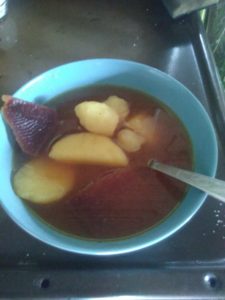
- 1 red beet
- 3 big potatoes
- 1 carrot
- a cube of vegetable stock
- a bit of salt
You first peel the red beet, carrot and potatoes and cut them into small cubes.
Then cook the vegetables in water, till they are tender. While they are cooking add the cube of vegetable stock and a bit of salt.
Tipp: The soup tastes even better if you let it stand for a few hours and then rewarm it.
Another rather easy, but delicious recipe my mother thaught me, is her Southern German style potato salad. It is perfect as a side dish or appetizer.
- 1 big onion
- 1/2 big spoon sweet mustard
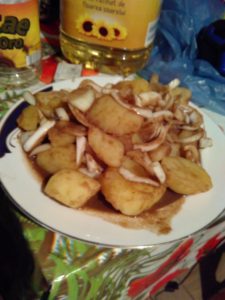
- 4 big potatoes
- 3 big spoons vinegar
- one cube of vegetable stock
- a bit of salt
Peel and cut the potatoes into big cubes. Cook them till they are tender. In the meanwhile cut the onions into pieces. Put half a glass of boiling water over the vegetable stock cube and mix it. Afterwards mix it with the vinegar, the mustard and the salt. Put the cooked potatoes, the mix and the onions into a big bowl and mix everything. Then put into the fridge for an hour.
/RO/ Cu toții cauzăm daune mediului înconjurător, pur și simplu prin a trăi. Ceea ce este doar un motiv în plus să încercăm să tăiem din asta, pentru noi și pentru generațiile viitoare. O zonă unde asta este foarte ușor, dar de asemenea necesar este hrănirea noastră. Agricultura industrială e responsabilă pentru 18 % din toate emisiile și unul dintre cele mai mari motive pentru deforestizarea Pădurilor Tropicale. Produsele animale sunt rele în mod special. Pentru a produce un kilogram de carne, trebuie investite 7-16 kilograme de grâu sau soia, soia care de cele mai multe ori vine din câmpuri care obișnuiau să fie Pădurea Tropicală Braziliană. O altă mare cauză de nocivitatea este importul de produse alimentare din alte țări sau uneori chiar alte continente. Trebuie întâi să treacă oceanele și apoi să fie transportate sute de kilometri în camioane pentru a ajunge la supermarket-ul vostru local. Transporturi care cauzează tone emisii de CO2 să fie pompate în atmosferă.
Încerc foarte mult să mă țin de aceste idei în timp ce gătesc. Una dintre mâncărurile mele favorite care face exact asta este Supa de Sfeclă Roșie. Este un preparat polonez și îl gătesc după rețetă mamei mele. Deși nu reușesc să o fac chiar așa de bună cum o face ea, tot iubesc să o gătesc (și să o mănânc).
Ingrediente:

- 1 sfeclă roșie
- 3 cartofi mari
- 1 morcov
- un cub de vegetable stock
- puțină sare
Pentru început curățați sfecla roșie, morcovii și cartofii și le tăiați în cuburi mici.
Apoi gătiți legumele în apă, până sunt fragede. În timp ce se gătesc adăugați cubul de stock de legume și puțină sare.
Pont: Supa are un gust chiar și mai bun dacă o lași să stea pentru câteva ore și apoi o reîncălzești.
O altă destul de ușoară, dar delicioasă rețetă pe care mama mea m-a învățat-o, este salata ei de cartofi în stil Sudic German. Este perfectă ca și garnitură sau aperitiv.
- 1 ceapă mare
- 1/2 lingură mare de muștar dulce

- 4 cartofi mari
- 3 linguri mari de oțet
- un cub de vegetable stock
- puțină sare
Curățați și tăiați cartofii în cuburi mari. Gătiții până sunt fragezi. Între timp tăiați ceapa în bucăți. Puneți jumătate de pahar de apă clocotită peste cubul de vegetable stock și amestecați. După aceea amestecați-l cu oțetul, muștarul și cu sarea. Puneți cartofii gătiți, mixul și ceapa într-un bol mare și amestecați totul. Apoi puneți în frigider pentru o oră.
Two weeks in different colors – Două săptămâni în culori diferite
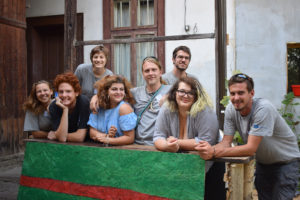 Our big family in Curba de Cultura got four more members in the 6th of August so the family grew from 14 to 18 people. Anthropology students Zenaida (Or how we call her Zena), Oana and Rareș stayed with us for 2 weeks but Daria only for one week.
Our big family in Curba de Cultura got four more members in the 6th of August so the family grew from 14 to 18 people. Anthropology students Zenaida (Or how we call her Zena), Oana and Rareș stayed with us for 2 weeks but Daria only for one week.

Together with them we went to interview people in every village, we looked for places in villages where people dump their trash, we observed the places around recycling bins while playing board games. We had to wake up really early on Friday morning in the first week because at 7 a.m. we started our mission “follow the trash trucks” and for me it was really interesting because I had never in my life thought I will follow someone in car and I definitely didn’t think I would follow trash truck. Sadly we weren’t like ”Men in black” and didn’t follow them secretly. I had a lot of fun doing these activities because I could learn more about Romania from them and also by going to people’s houses. Thanks to these two weeks I discovered other villages of Izvoarele commune. We worked in different teams but for me it wasn’t so much working because I was enjoying all our activities and everything I did was a new experience for me.
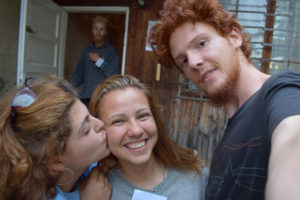
I also enjoyed the free time that we spent together every day and we also partied after a well done job. Zena was really kind and gave me a new haircut because I’m too lazy to find a hairdresser and it turned out better than I thought. Oana and Zena were the sweetest human beings, from them I got a lot of hugs and love. With Rares story goes like this “Once he always had a hat on his head but then he met me who always borrowed his hat”.
So the question is what are the colors of the two weeks I spent together with them? The colors of a lot of love, good memories, new friendships and adventures.
Marea noastră familie de la Curba de Cultură a mai primit patru membri din 6 august, deci a crescut de la 14 la 18. Studenții la antropologie Zenaida (ori cum o numim noi, Zena), Oana și Rareș au stat cu noi două săptămâni, iar Daria doar una.
Împreună cu ei am mers să intervievăm oamenii din sat, am căutat locuri în care aceștia aruncă gunoiul și am ținut sub observație tomberoanele de reciclare în timp ce jucam boardgames. A trebuit să ne trezim foarte devreme vineri dimineața în prima săptămână căci la 7 a.m. ne-am început misiunea „urmărirea caminoanelor ce colectează gunoi” și pentru a mine asta a fost foarte interesant, căci nu am mai urmărit vreodată în viața mea o mașină și nu mă gândeam vreodată că voi urmări camioanele de gunoi. Din păcate nu am fost „Men in black” și nici nu le-am urmărit în secret. M-am distrat de minune și am putut să învăț mai multe despre România din activitățile astea și din vizitele în casele oamenilor. Mulțumită acestor două săptămâni am descoperit și celelalte sate ale comunei Izvoarele. Am lucrat în echipe diferite, dar pentru mine nu a fost muncă, căci m-am bucurat de toate activitățile și de tot ce am făcut, căci a fost o experiență nouă.
M-am bucurat și de timpul liber pe care l-am petrecut împreună și de petrecerile făcute după muncă. Zena a fost super de treabă și mi-a făcut o tunsoare nouă, căci mi-a fost lene să caut un coafor, și s-a dovedit a fi mai bine decât am crezut. Oana și Zena sunt cele mai dulci persoane pe care el știu și am primti de la ele doar îmbrățișări și iubire. Cu Rareș povestea să în felul următor „odatpă avea o pălărie pe cap, dar de când m-a întâlnit mi-a împrumutat-o mie întotdeauna.”
Întrebarea e acum, ce culoare au aut aceste două săptămâni petrecute cu ei? Culoarea dragostei, a amintirilor frumoase, a prieteniilor și a aventurilor.
Laura este în România pentru o perioadă de două luni, din iulie până în august 2018, în cadrul proiectului Community Volunteers 18/19 [2018-1-LV02-KA105-002120] proiect co-finanțat de Uniunea Europeană prin Programul Erasmus+ și implementat în România de către Curba de Cultură.